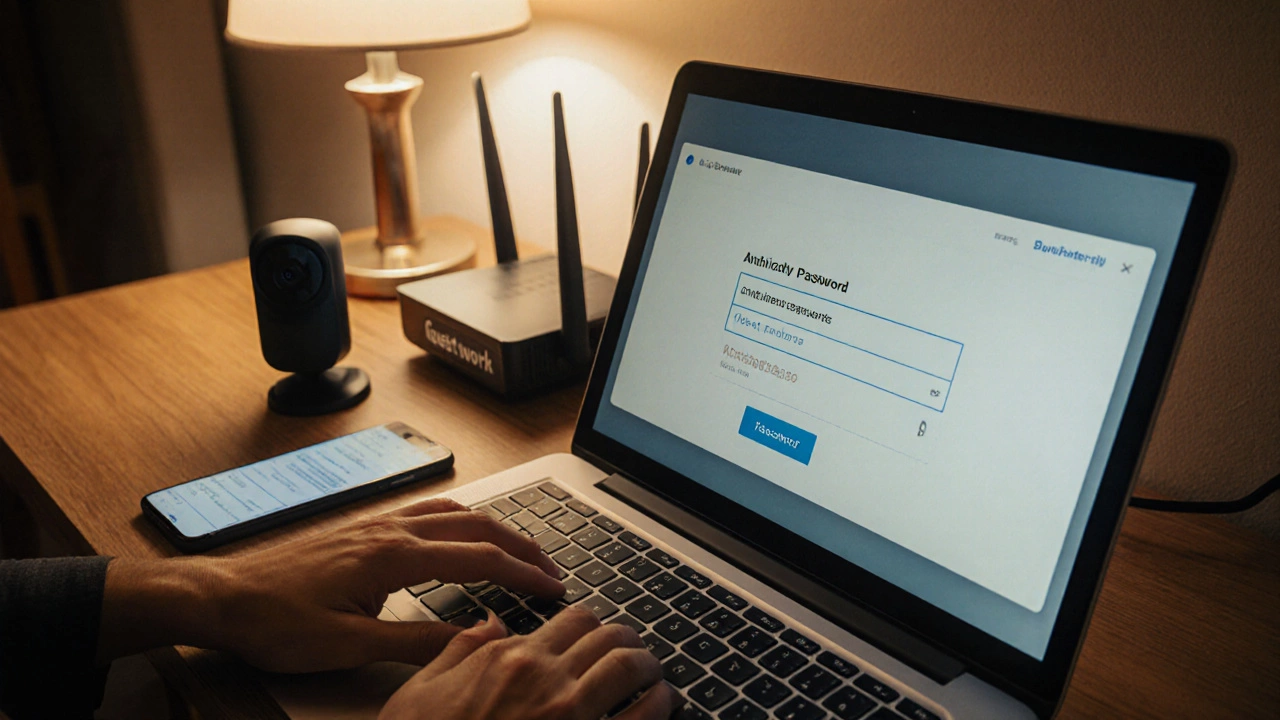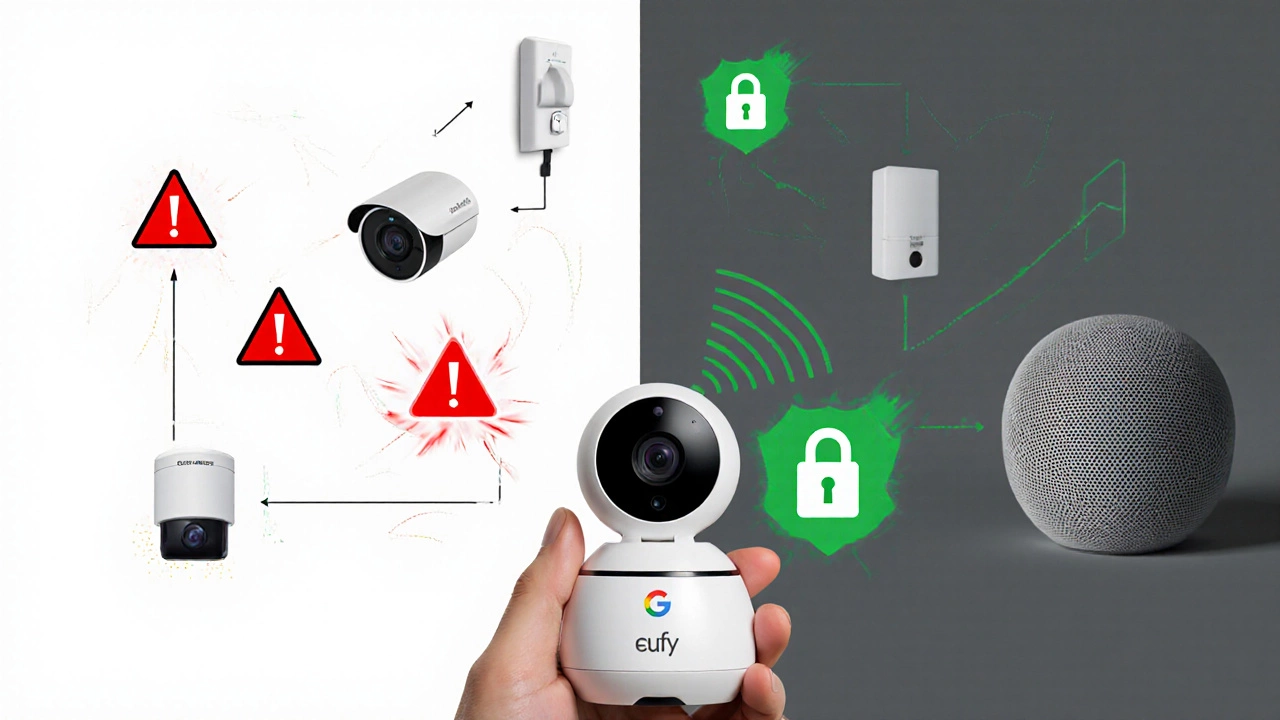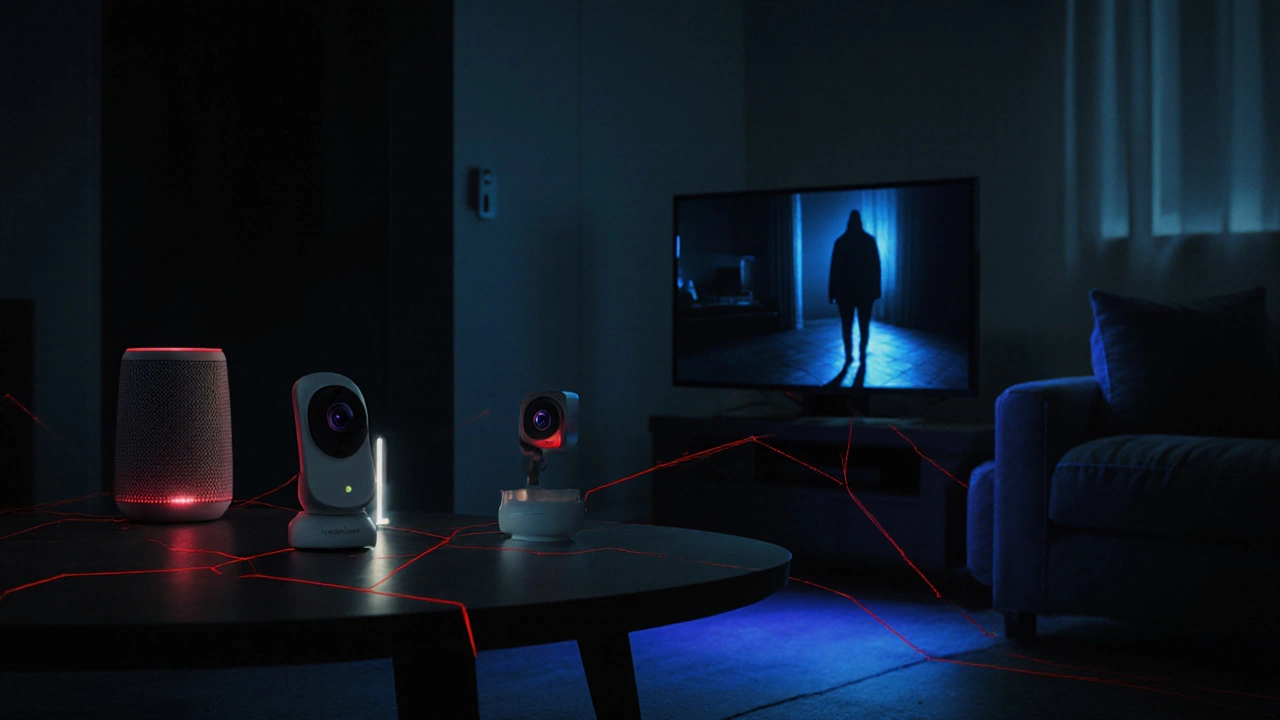Smart Home Security Score Calculator
How secure is your smart home?
Answer these questions to get your personalized security score and fix recommendations.
Security Recommendations
Smart homes promise convenience-lights that turn on when you walk in, thermostats that learn your schedule, doorbells that show who’s at the door. But how safe are they really? If you’ve ever worried about hackers breaking into your baby monitor or a thief unlocking your front door with a phone app, you’re not alone. The truth is, smart home devices are more vulnerable than most people think-and many of the risks are easy to fix if you know where to look.
Smart home devices are connected, and that’s the problem
Every smart speaker, camera, lock, or thermostat you add to your home becomes a potential entry point for hackers. Unlike your laptop or phone, most smart home gadgets don’t get regular software updates. A 2024 report from the cybersecurity firm Kaspersky found that nearly 60% of smart home devices in North American homes had known security flaws that manufacturers never patched. That’s not a bug-it’s the norm.
Take smart cameras. They’re great for checking on your pets or kids, but many use default passwords like "admin" or "123456". Hackers use automated tools to scan the internet for devices with these weak logins. In 2023, a group of researchers in Toronto found over 12,000 unsecured baby monitors live online, all viewable from anywhere in the world. Some were even broadcasting audio from bedrooms.
What hackers can actually do
It’s not just about spying. A skilled attacker can use one vulnerable device to take over your whole network. For example, if your smart thermostat has a weak password, a hacker might use it to access your Wi-Fi router. From there, they can intercept data from your phone, steal login details, or even disable your smart locks.
There are real cases of this happening. In 2022, a family in Seattle returned home to find their smart lock had been unlocked remotely. The intruder had accessed their system through a compromised smart plug that was connected to the same network. The lock didn’t have two-factor authentication. The plug didn’t even have a password-it used a default code that never changed.
Worse, some devices are designed to be "always listening". Smart speakers like Amazon Echo or Google Nest record voice commands, then send them to the cloud. While companies say they anonymize this data, researchers have found that these recordings can be linked back to users through device IDs, purchase history, and even speech patterns. In one case, a woman in Vancouver received a targeted ad for a pregnancy test on her smart TV-after she’d casually mentioned feeling sick to her Alexa.
Most smart home security flaws are human
The biggest risk isn’t the device-it’s how you set it up. Most people never change the default password. They use the same password across all their devices. They connect everything to one Wi-Fi network without segmenting it. They ignore firmware updates because "it’s not broken."
Here’s what actually works:
- Change every default password. Use a mix of letters, numbers, and symbols. No "password123".
- Set up a separate Wi-Fi network for your smart devices. Most modern routers let you create a "guest network"-put all your smart gadgets there. That way, if one gets hacked, your laptops and phones stay safe.
- Turn off remote access unless you need it. If you don’t check your doorbell camera from work, disable cloud access entirely.
- Enable two-factor authentication (2FA) wherever possible. Even if someone guesses your password, they can’t log in without the code sent to your phone.
- Check for firmware updates monthly. Some devices notify you. Others don’t. If yours doesn’t, check the manufacturer’s website yourself.

Not all smart devices are created equal
Some brands care more about security than others. Ring, for example, has had multiple high-profile breaches. Their cameras were hacked in 2019, 2021, and again in 2023. In contrast, devices from brands like August (smart locks) and Eufy (cameras) have better track records because they store data locally instead of sending everything to the cloud.
Look for these features before buying:
- Local storage only (no cloud required)
- End-to-end encryption
- Regular firmware updates (at least every 6 months)
- Two-factor authentication built in
- Transparent privacy policy-no vague language like "we may use your data for research"
Brands like Google and Amazon push convenience over security. If you’re serious about safety, consider smaller companies that specialize in privacy-focused smart home gear. Eufy, for instance, doesn’t even have a mobile app that uploads your footage to their servers. Everything stays on your SD card.
What about voice assistants? Are they spying on you?
They’re not secretly recording your conversations 24/7-but they are listening. Your smart speaker activates when it hears its wake word ("Alexa," "Hey Google"). But sometimes, it gets confused. A dog barking, a TV show, or even a loud laugh can trigger it. Once activated, it sends the audio to the cloud.
Amazon and Google say they delete recordings after 18 months, and you can delete them anytime. But here’s the catch: those recordings are used to train their AI. That means your voice, your accent, your tone-all of it-helps improve their products. If you’re uncomfortable with that, turn off voice recording entirely in the app settings. You can still use the device manually by pressing a button.

Is a smart home worth the risk?
Yes-if you take control. A smart home doesn’t have to be a security nightmare. Most breaches happen because people treat these devices like regular appliances. They plug them in and forget them. But they’re not appliances. They’re computers with microphones, cameras, and internet access.
Think of your smart home like your car. You don’t leave the keys in the ignition. You lock the doors. You don’t park in a dark alley. Same rules apply here. Secure the entry points. Limit access. Stay updated.
The safest smart home isn’t the one with the most gadgets. It’s the one with the fewest-carefully chosen, properly configured, and regularly checked.
Quick checklist: 5 things to do today
- Go through every smart device in your home. Change any default passwords.
- Create a separate Wi-Fi network for smart devices. Move everything to it.
- Turn off remote access on cameras and locks if you don’t use it.
- Enable two-factor authentication on all accounts linked to your smart home.
- Check for firmware updates. If your device hasn’t been updated in over a year, consider replacing it.
Can someone hack my smart lock and open my door?
Yes, if the lock uses weak passwords, no two-factor authentication, or connects to a compromised network. But most smart locks from reputable brands like August or Yale have strong encryption and require a code or phone authentication. The risk is low if you’ve set it up correctly. Never use the same password for your lock as you do for your email or bank.
Do I need a VPN for my smart home?
Not usually. A VPN encrypts your internet traffic, but most smart home devices don’t need it. What you need is a separate Wi-Fi network for your gadgets and strong passwords. A VPN won’t fix a device with a default password. Focus on network segmentation instead.
Are smart home devices safe for kids and elderly family members?
They can be, but only if you control the access. Kids might accidentally trigger alarms or change settings. Elderly users might not know how to update passwords. Set up a simple, secure system with voice controls or big buttons. Avoid complex apps. Use devices that require physical access to change settings, like a keypad on the door instead of an app.
What should I do if I think my smart home has been hacked?
Disconnect all smart devices from the network immediately. Reset your router to factory settings. Change passwords for every device and account linked to them. Check your router’s connected devices list for anything unfamiliar. If you’re unsure, contact your internet provider-they can help scan for intrusions. Don’t just reboot the devices. The hack might still be active.
Is it safer to use wired smart devices instead of wireless ones?
Wired devices like hardwired security cameras or thermostats are generally more secure because they don’t rely on Wi-Fi. But they’re not foolproof. If they connect to your home network, they can still be hacked through the router. The key isn’t wired vs. wireless-it’s how you secure the network. A well-protected wireless device is safer than a poorly secured wired one.
If you’ve already set up your smart home, don’t panic. Start with the checklist. Do one thing today. Then another tomorrow. Security isn’t about perfection-it’s about progress. The more you lock down, the safer you become.

